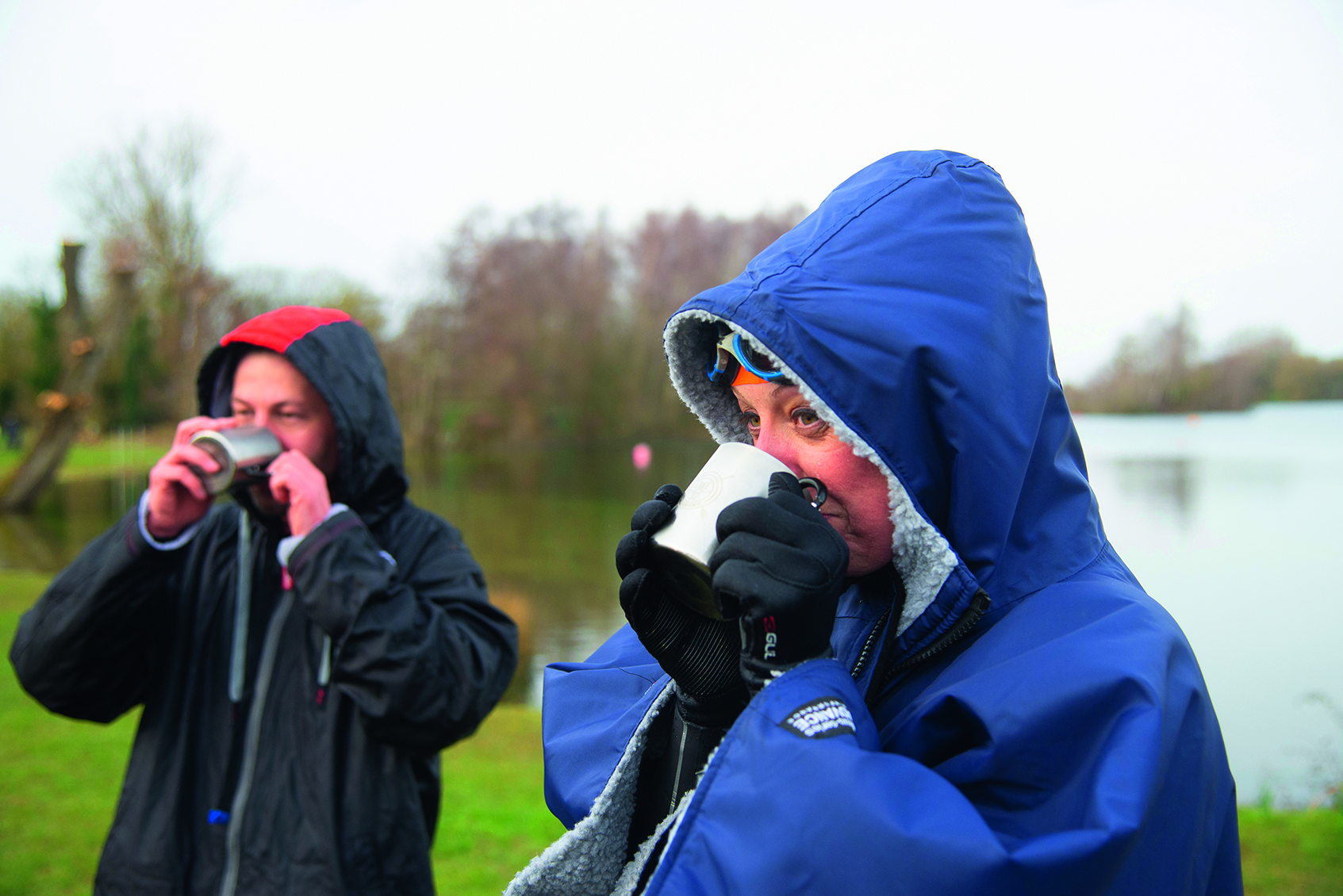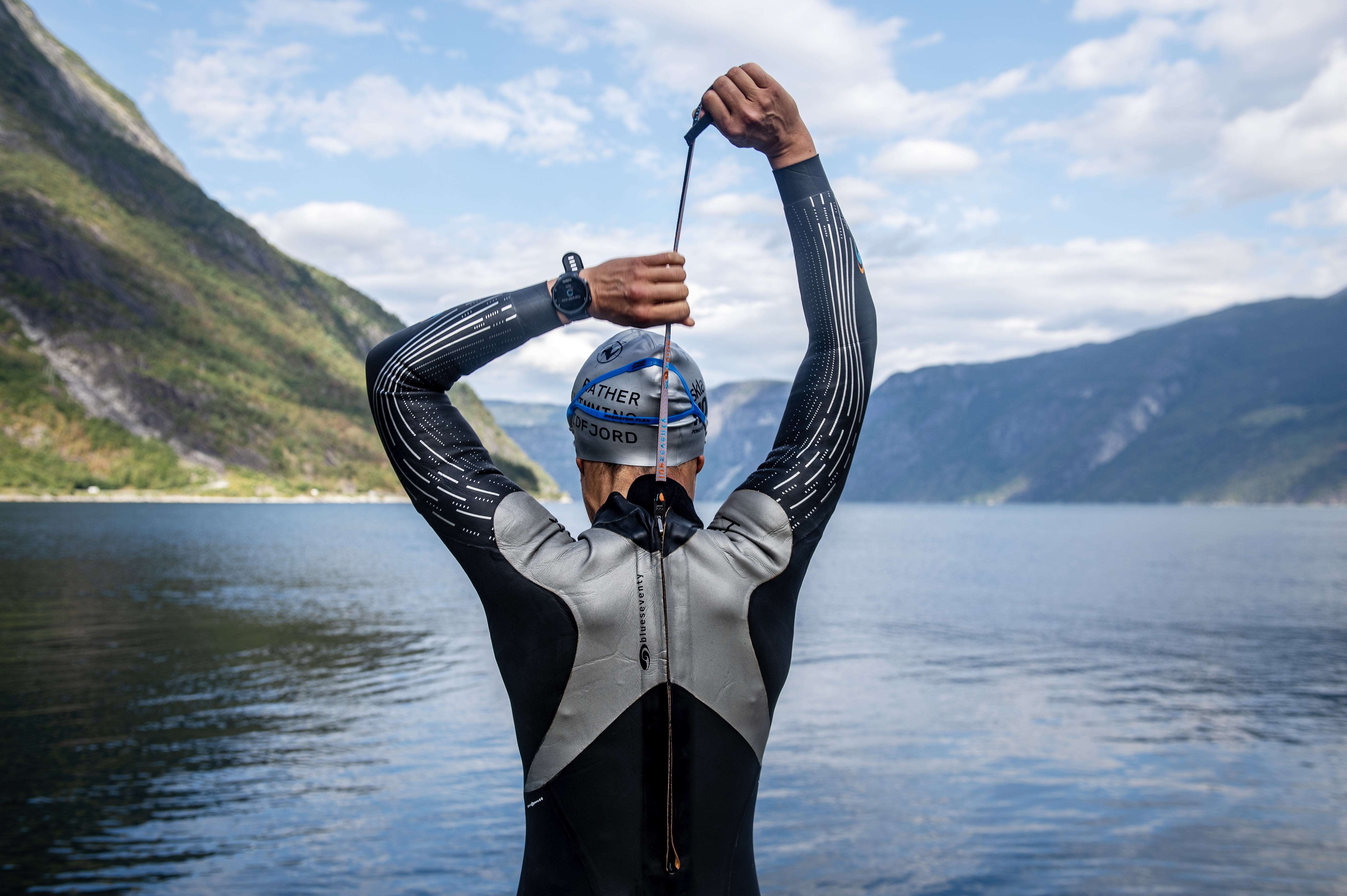What do you wear under a wetsuit?
New to triathlon or open-water swimming? Here's what you should be wearing under your wetsuit so you stay warm and comfortable...

A wetsuit can be a great help when you’re swimming outdoors (whether for a triathlon or leisure), as it helps provide buoyancy, adds warmth and helps you become more streamlined in the water.
Whether or not you wear one for training is a matter of personal choice, but if you’re racing in a triathlon under British Triathlon rules where the water temperature is below 16°C, you don’t have a choice and have to wear a wetsuit to abide by the rules.
But what should you wear under your wetsuit, regardless of if you’re racing, training or just having a casual swim? Below, we talk through the most appropriate kit to wear under your wetsuit for every open-water swimming scenario.
What do you wear under a wetsuit?
What you wear under your wetsuit will vary completely depending on your activity and its duration.
During a race, we always recommend wearing a tri-suit (see our pick of the best tri-suits here). This is because you can wear it during each discipline, it dries quickly, has cushioning for the bike, pockets for snacks and is normally comfortable on the run.
For those who are only looking to do open-water swimming in their wetsuit, you could get away with wearing a swimsuit, swimming shorts or jammers underneath.
Again, pick something that’s comfortable, not too tight and won’t dig-in, as this can lead to rubbing between the layers over your skin.
You may also want to consider investing in some wetsuit lube to protect the skin from chafing along pinch points like around the neck (no one wants a rhino neck!), under the arms and along wrists and ankles to aid smooth removal.
This is particularly useful in race conditions.
What can I wear under a wetsuit to keep warm?

If you’re swimming in temperatures under 20°C, and especially in colder waters below 15°C, it’s important that you wear enough layers under your wetsuit and on your extremities.
Even if the air temperature is mild and sunny, remember that it can often be a lot colder under the water and the human body loses heat a lot quicker when submerged.
This is where neoprene socks and neoprene gloves become absolutely essential in helping to retain heat and enabling you to keep swimming safely for longer.
Also consider a neoprene hat or hood to protect the head if you’re putting your head underwater, while extra additions like neoprene swimsuits, thermal swim base layers or rash vests will just provide that extra bit of warmth that you’ll be thankful for when swimming.
In cold conditions, what you wear after your swim is just as important as what you wear during it, as you’ll need to get dry and warm to avoid the cold-water afterdrop or, in severe cases, hypothermia.
Investing in a good changing robe, warm layers and an insulated jacket is a good start, while a sugary snack will also be a huge asset.
What else should I wear with a wetsuit?

Along with a tri-suit or swimming costume, there’s a few bits of key kit that you’ll want to wear while swimming in open water. These include:
- Tow float – for visibility and to stash any essentials, pick one with an in-built dry-bag compartment
- Open-water swimming goggles – pick a pair with ample visibility and anti-fog protection
- Swimming cap – a brightly coloured silicone hat is essential to increase visibility in the water; consider wearing two hats to retain more warmth
- Triathlon watch – tracking your swim is key not only for the Strava kudos, but so you can keep an eye on how far and how long you’ve been swimming, and when it’s a good idea to get out and warm up
- Energy bar or energy gels – carrying a small bar or gel for an emergency sugar hit is a good idea to keep the body ticking along if you’re feeling low on energy
- Gloves, socks and neoprene hat – for colder conditions, these pieces of kit are essential to retain heat and safely keep you in the water for longer
Top image credit: Croyde Triathlon




